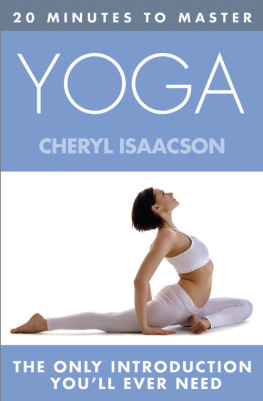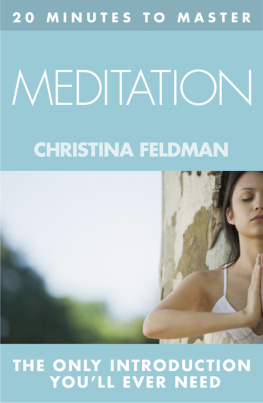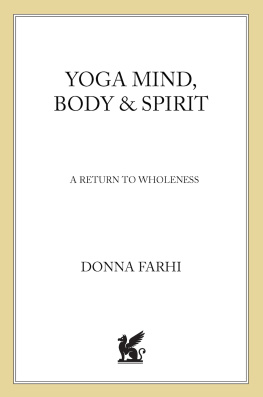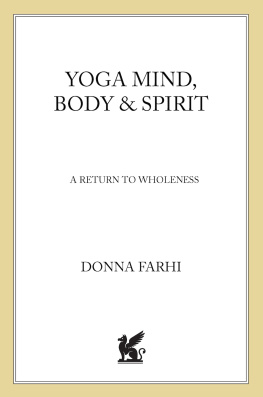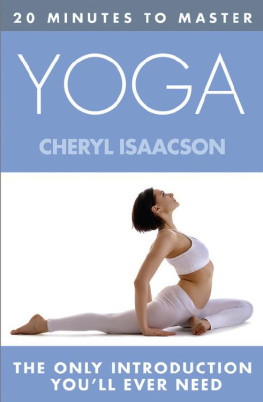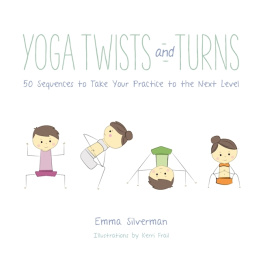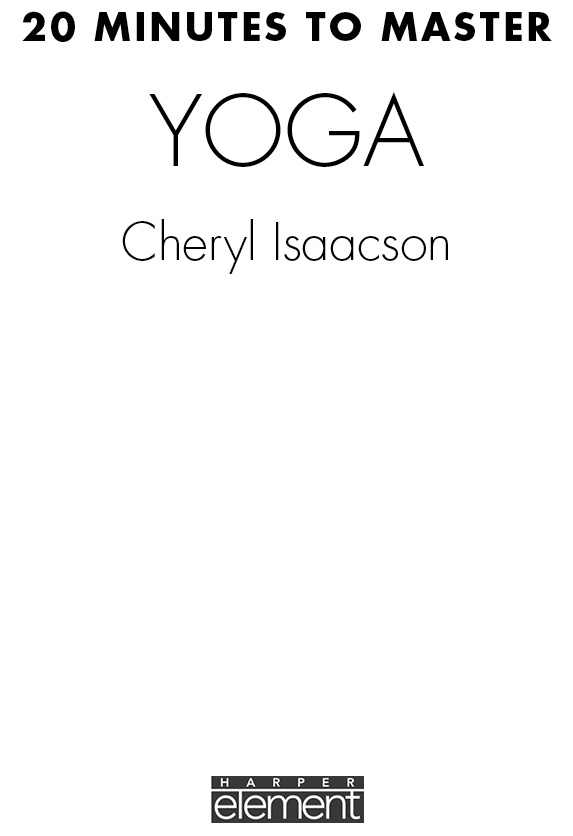Yoga is a time-honoured system of balancing mind, body and spirit.
CHAPTER 1
NOT JUST KNOTS
What do you think of when someone mentions yoga? People bending and stretching, balancing and twisting, in the classic poses now familiar to the health scene? Deep relaxation and mind control? Chanting and meditating and staring into candle flames? If so, then you are right on all counts but you are only seeing part of the whole. The practices that we call yoga today are just one small part of what is actually a many-sided, practical, life-enhancing discipline.
Yoga was originally part of the mystical wisdom of Indian philosophy, but today we mostly concentrate on the body postures, or asanas, with perhaps some breath control and a little meditation thrown in. The postures certainly help you to become fit and supple, but they are only one aspect of the complete way of life that yoga can bring.
Yoga also offers:
- practical techniques for living life healthily and holistically, from following the correct diet to deep breathing and body strengthening
- a complete code of ethics for daily life
- simple methods for relaxing and meditating
- postures for a toned, supple, healthy, strong body
- tried and tested ways to find profound personal peace and stability.
Yoga can affect your whole life and there are many different ways of applying it. It is not just for the young and fit, and most importantly you can start at any time. Yoga has something for a truly wide range of people, whatever the state of their mind and body.
YOGAS SPIRITUAL PATH
The desire for spiritual experience has led many to look to the religious systems of the East. Yoga is, at heart, a spiritual path that offers powerful rituals and meditation techniques to help us enter other states of consciousness. People call this many different things: a spiritual sense, a connection with a greater power, a higher consciousness, even God. Whatever form it takes, it seems to be as important to human satisfaction now as it was 3,000 years ago.
Mystics and sages show us that spiritual bliss and extraordinary peace are possible. However, the closest most of us get to this is a flash of feeling at one with the universe. While this feeling may not last, it does open us up to a different state of being. If you want to achieve some peace of mind, or connect with a more spiritual part of yourself, then this is possible through yoga.
Yoga is the mystical religious philosophy of India.
CREATING BALANCE
Yoga creates a sense of balance from offering practical advice on following the right diet to allowing you to calm the mind by consciously detaching from the stresses of everyday life. Even though it is thousands of years old, yoga can work wonders in present times.
YOGAS PHILOSOPHICAL PATH
The ideas behind yoga are very closely linked to Indian philosophy. This is made up of many highly complex ideas, which are so much part of Indias hugely diverse religious tradition that the two are inseparable. There are six main branches of Indian philosophy, and yoga is one of these branches. Yoga represents the mystical tradition, and aims to bring about a union between the individual being and the universal consciousness. In fact, the word yoga is most commonly translated as union.
CHAPTER 2
Some forms of yoga can be traced back 2,500 years, while others are said to be medieval. Physical, or Hatha yoga, probably dates from around the tenth century AD.
THE VEDIC AGE
Between 1,800 BC and 1,000 BC the Indus Valley was inhabited by Sanskrit-speaking tribes known as the Vedic people. They give us our first firm links with yoga. Hymns dating from that time (such as the Rig Veda and the Atharva-Veda) describe practices which we would recognize as powerful meditations. In fact the origins of all the ideas that we think of as yogic are here.
Terracotta seals have been found in the Indus valley, dating from around 3,000 years ago. These show figures, probably ancient gods, sitting in recognizably yogic postures, such as the famous lotus pose, with legs folded, hands on their knees and the feet crossed one on top of the other.
THE INDIAN EPICS
The six main branches of Indian philosophy arose around 600500 BC. Then, from about 8 BC a more mystical trend developed with the writing of yogas most important literary works, the Upanishads. These describe developments within the whole Hindu culture, which was just beginning to form its own religious identity. Along with the Upanishads, the national epics of India, the Ramayana (5th or 6th century BC) and the Mahabharata (5th century BC), are important. The Mahabharata contains the Bahagavad Gita, a treatise that looks at the central yogic precept of non-attachment to material things. It also contains another section on yoga theory.
YOGA THROUGH THE AGES
These texts have been added to and developed through time, and through the ages yoga has embraced a great variety of teachings, writings and practices. The most famous person to expound on yoga from a philosophical point of view was Patanjali, who wrote the Yoga Sutras some time between 200 BC and 200 AD. He condensed yogic wisdom into a series of brief aphorisms on spiritual practice and power, still highly relevant today. With yoga, spiritual unity seemed to be accessible through anything from sexual bliss to total isolation. But the ultimate goal of all these practices was enlightenment.
HATHA YOGA
Physical yoga (usually called by its Sanskrit name, Hatha yoga) developed in the tenth century AD, when a legendary charismatic healer and celibate called Goraksha wrote a work called Hatha-Yoga. This became a standard text which was developed and added to until the mid-14th century, when Hatha Yoga Pradipika, the best-known work of classical yoga practice, appeared. It describes the basic cleansing methods of the body, breath control methods, energy-controlling hand positions, and ways of holding the body to intensify life energy. It also goes through in detail the postures as we know them today.

